
The Untamed Wilderness of Mago National Park
Explore Mago National Park, Ethiopia's hidden gem, teeming with wildlife, rich tribal culture, and breathtaking landscapes, offering an unforgettable adventure into the wild.
Mago National Park, located in the Southern Nations, Nationalities, and Peoples' Region of Ethiopia, is a pristine and captivating destination for nature lovers and adventurers alike. Stretching over 2,162 square kilometers, the park is a lush haven filled with diverse wildlife, including elephants, lions, and over 300 bird species. The park's rugged terrain and dense forest offer a perfect setting for those seeking an authentic African safari experience. One of the unique aspects of Mago National Park is its cultural significance. The park is home to the Mursi tribe, renowned for their distinctive lip plates and rich cultural traditions. Visitors have the rare opportunity to engage with the Mursi people, learn about their way of life, and witness traditional ceremonies. This cultural immersion adds a fascinating layer to the natural beauty of the park. The Omo River, which flows through the park, provides a lifeline for both wildlife and people. The river's banks are ideal for spotting hippos and crocodiles, while its waters offer thrilling rafting adventures. The park's diverse landscapes, from savannas to riverine forests, create a picturesque backdrop that will leave visitors in awe. Whether you're an avid wildlife photographer, a cultural enthusiast, or simply someone seeking tranquility in nature, Mago National Park promises a memorable and enriching experience.
Local tips in Mago National Park
- Visit during the dry season (December to March) for the best wildlife viewing.
- Hire a local guide to enhance your experience and ensure your safety.
- Respect the local culture; always ask permission before taking photos of the Mursi people.
- Bring insect repellent and sun protection, as the climate can be harsh.
- Plan your trip in advance, as accommodations within the park are limited.
The Untamed Wilderness of Mago National Park
Mago National Park, located in the Southern Nations, Nationalities, and Peoples' Region of Ethiopia, is a pristine and captivating destination for nature lovers and adventurers alike. Stretching over 2,162 square kilometers, the park is a lush haven filled with diverse wildlife, including elephants, lions, and over 300 bird species. The park's rugged terrain and dense forest offer a perfect setting for those seeking an authentic African safari experience. One of the unique aspects of Mago National Park is its cultural significance. The park is home to the Mursi tribe, renowned for their distinctive lip plates and rich cultural traditions. Visitors have the rare opportunity to engage with the Mursi people, learn about their way of life, and witness traditional ceremonies. This cultural immersion adds a fascinating layer to the natural beauty of the park. The Omo River, which flows through the park, provides a lifeline for both wildlife and people. The river's banks are ideal for spotting hippos and crocodiles, while its waters offer thrilling rafting adventures. The park's diverse landscapes, from savannas to riverine forests, create a picturesque backdrop that will leave visitors in awe. Whether you're an avid wildlife photographer, a cultural enthusiast, or simply someone seeking tranquility in nature, Mago National Park promises a memorable and enriching experience.
When is the best time to go to Mago National Park?
Iconic landmarks you can’t miss
Simien Mountains National Park
Explore the breathtaking landscapes and unique wildlife of Simien Mountains National Park, a UNESCO World Heritage Site in Ethiopia.

Bale Mountains National Park
Explore the breathtaking landscapes and unique wildlife of Bale Mountains National Park, an unforgettable destination for nature lovers in Ethiopia.

Awash National Park
Discover the breathtaking landscapes and diverse wildlife of Awash National Park, a true gem in Ethiopia's natural heritage.

Nech Sar National Park
Explore the breathtaking landscapes and diverse wildlife of Nech Sar National Park, a natural wonderland in Ethiopia near Arba Minch.

Chebera-Churchura National Park
Explore the breathtaking wilderness of Chebera-Churchura National Park, a must-visit destination in Ethiopia for nature lovers and adventure seekers.

Eco Omo Lodge
Experience the tranquility and beauty of Jinka at Eco Omo Lodge, where comfort meets sustainable travel in the heart of Ethiopia's Omo Valley.

Yangudi Rassa National Park
Explore the breathtaking landscapes and unique wildlife of Yangudi Rassa National Park, a true Ethiopian wilderness experience.

Gambella National Park
Explore the diverse wildlife and breathtaking landscapes of Gambella National Park, a hidden gem in Ethiopia for nature and adventure enthusiasts.

Babile Elephant Sanctuary
Explore the wonders of Babile Elephant Sanctuary, a vital conservation area for elephants in Ethiopia, where nature and wildlife thrive harmoniously.

Round Omo Valley Tour
Discover the breathtaking landscapes and rich cultures of the Round Omo Valley in Ethiopia, a perfect destination for every adventurous traveler.

Key Afer Market
Experience the vibrant atmosphere of Key Afer Market, where authentic Ethiopian culture meets local craftsmanship and fresh produce.

Open Ethiopia Tours
Explore the vibrant cultures and breathtaking landscapes of Ethiopia's Omo Valley with Open Ethiopia Tours, your ultimate travel partner.

Kafta Sheraro National Park
Explore the breathtaking landscapes and diverse wildlife of Kafta Sheraro National Park, a true Ethiopian treasure for nature lovers and adventure seekers.

Awash park
Discover the enchanting Awash Park, a stunning Ethiopian oasis teeming with wildlife and breathtaking landscapes, perfect for adventurers and nature lovers.

Omo Delta Tours
Discover the breathtaking beauty and vibrant cultures of Ethiopia's Omo Valley with Omo Delta Tours, your gateway to unforgettable adventures.

Unmissable attractions to see
Bale Mountains National Park
Discover the stunning landscapes and rich biodiversity of Bale Mountains National Park, a natural paradise in Ethiopia perfect for adventure seekers and nature lovers.
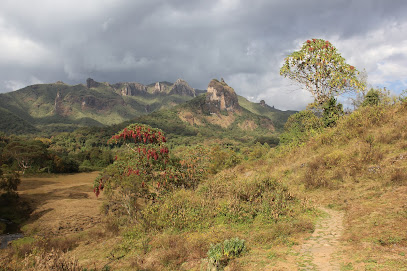
Gambella National Park
Explore the diverse wildlife and stunning landscapes of Gambella National Park, an untouched gem in Ethiopia's heart, perfect for nature lovers and cultural enthusiasts.

Babile Elephant Sanctuary
Explore the breathtaking Babile Elephant Sanctuary, Ethiopia's haven for wildlife and a vital conservation area dedicated to majestic African elephants.
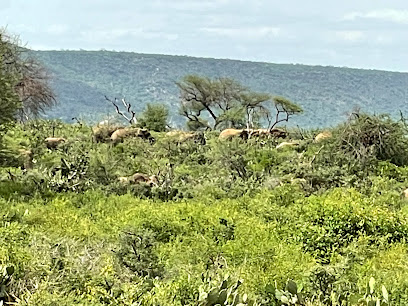
Kafta Sheraro National Park
Explore Kafta Sheraro National Park, Ethiopia's wildlife haven, featuring stunning landscapes and diverse ecosystems for nature lovers and adventure seekers.

Awash park
Discover Awash Park, a vibrant natural haven in Ethiopia, filled with diverse wildlife and stunning landscapes perfect for adventure and relaxation.

Omo Valley Eco Tours
Experience the cultural richness and stunning landscapes of Ethiopia at Omo Valley Eco Tours, a premier eco-tourism destination.

Turmi
Explore Turmi, Ethiopia: A Cultural Haven in the Heart of Omo Valley Featuring Unique Traditions and Breathtaking Landscapes.

The Omo Remains
Explore the Omo Remains, a significant archaeological site in Ethiopia, revealing ancient fossils and the story of human evolution amidst stunning landscapes.

Explore omo valley
Experience the breathtaking beauty and rich cultural heritage of the Omo Valley, a hidden gem in Ethiopia that captivates every traveler.

Omo National Park
Explore the breathtaking landscapes and diverse wildlife of Omo National Park, a hidden gem in Ethiopia's vast wilderness.
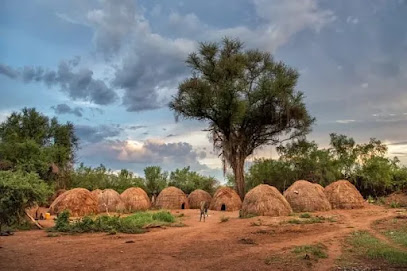
ጂንካ አደባባይ
Explore Jinka City Park: A Tranquil Oasis of Nature and Culture in the Heart of Ethiopia.

Jinka local tour guide
Experience the vibrant culture and stunning landscapes of Jinka, Ethiopia—your gateway to the Omo Valley's rich heritage and wildlife.

Bull jumping area
Discover the exhilarating tradition of bull jumping in Turmi, Ethiopia, a vibrant cultural experience that showcases the Hamar people's rich heritage.

Nymgatom
Explore Nymgatom, a stunning tourist attraction in Kara Dus, Ethiopia, where natural beauty and rich culture come together for an unforgettable experience.

Zekargachew Tadele
Experience the beauty and culture of Ethiopia at Zekargachew Tadele, a scenic farm in Jinka showcasing local agriculture and traditions.

Essential places to dine
Sishu | Kera
Experience the best of American cuisine at Sishu | Kera in Addis Ababa - where comfort food meets Ethiopian hospitality.

Yod Abyssinia Traditional Restaurant
Experience authentic Ethiopian cuisine at Yod Abyssinia Traditional Restaurant in Addis Ababa – where culture meets flavor.

2000 Habesha cultural restaurant | Bole Atlas | 2000 ሀበሻ የባህል ሬስቶራንት | ቦሌ አትላስ
Discover the heart of Ethiopian cuisine at 2000 Habesha Cultural Restaurant—where flavor meets tradition in Addis Ababa.

Dashen Traditional Restaurant
Discover Dashen Traditional Restaurant: A gateway to authentic Ethiopian flavors and cultural experiences in Addis Ababa.

Bait Al Mandi
Experience authentic Yemenite cuisine at Bait Al Mandi in Addis Ababa - where every dish tells a story of tradition and flavor.

OM Indian Bistro | Bole Rwanda
Discover the authentic flavors of India at OM Indian Bistro in Bole, Addis Ababa - a must-visit culinary destination.
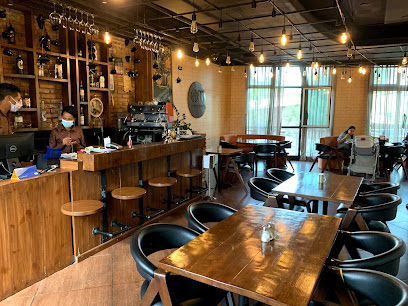
Sangam Restaurant
Experience authentic Indian cuisine at Sangam Restaurant in Addis Ababa – where flavors come alive in every dish.

La Mandoline French Restaurant
Experience authentic French cuisine at La Mandoline in Addis Ababa - where culinary excellence meets cultural charm.
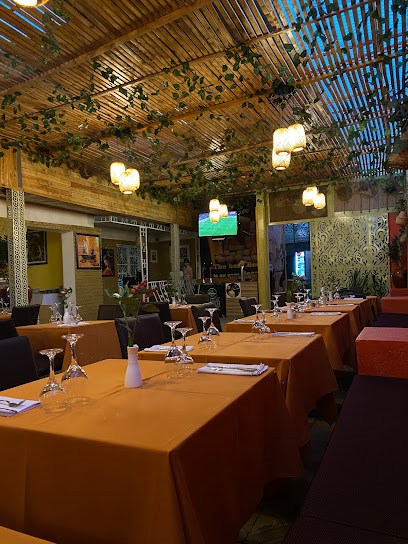
Dok Restaurant Top View
Savor authentic Italian cuisine at Dok Restaurant in Addis Ababa – where culinary artistry meets breathtaking views.
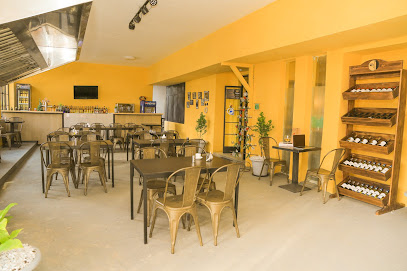
Mamma Mia Italian Restaurant & Bar
Experience authentic Italian cuisine at Mamma Mia Italian Restaurant & Bar in Addis Ababa – where every meal feels like a journey to Italy.

Mama's Kitchen | Bole Medhanialm | ማማስ ኪችን | ቦሌ መድሐኒአለም
Experience authentic Ethiopian cuisine at Mama's Kitchen in Bole Medhanialm – where tradition meets flavor.

HOTTO
Discover the vibrant flavors of Ethiopia at HOTTO, where culinary traditions meet modern dining in the heart of Addis Ababa.

Entoto Restaurant
Experience authentic Ethiopian cuisine at Entoto Restaurant in Addis Ababa - where tradition meets flavor in every dish.

Meskott Culinary Experience
Experience authentic Ethiopian cuisine at Meskott Culinary Experience in Addis Ababa—where tradition meets flavor.

Sichuan Chinese Restaurant
Experience authentic Sichuan cuisine in Addis Ababa's vibrant Yeka borough; savor bold flavors and warm hospitality at this beloved Asian restaurant.

Markets, malls and hidden boutiques
Shola Market | Megenagna
Explore the lively Shola Market in Addis Ababa, where culture meets commerce in a colorful display of Ethiopian life.

Nayo Gift and Decoration Shop
Explore the vibrant artistry of Ethiopia at Nayo Gift and Decoration Shop, where unique gifts and decorations await every traveler.

Turmi Market
Experience the vibrant culture of Ethiopia at Turmi Market, where local traditions, crafts, and flavors come alive.

All In One Souvenir & Gift Shop
Explore All In One Souvenir & Gift Shop in Addis Ababa for authentic Ethiopian crafts and unique gifts reflecting the country's rich heritage.

Abdi Negash Antique Store
Explore Abdi Negash Antique Store in Addis Ababa: Your destination for unique antiques, rare art, and cultural treasures.

Ellilta Products
Explore the heart of Ethiopian craftsmanship at Ellilta Products, featuring unique handcrafted gifts and souvenirs in Addis Ababa.

Jinka ethiotelecom Shope
Discover Jinka ethiotelecom Shop: Your gateway to connectivity in the heart of Ethiopia's vibrant Jinka.
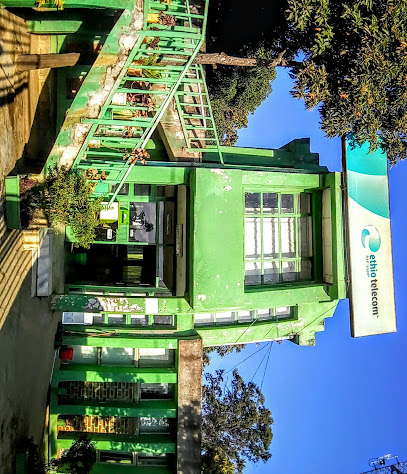
Kassu Shop
Explore Kassu Shop in Jinka: A vibrant shopping experience filled with local crafts, unique souvenirs, and cultural treasures.

Root in Style
Shop unique and stylish bags at Root in Style, located in the vibrant Century Mall of Addis Ababa, offering a blend of fashion and culture.

Mago National Park
Discover the stunning landscapes and diverse wildlife of Mago National Park, a hidden gem in Ethiopia's natural heritage.

Dashen Beer
Experience the rich flavors of Ethiopian craft beer at Dashen Beer in Jinka, where local ingredients meet brewing excellence.

Lid Supermarket
Discover the flavors of Jinka at Lid Supermarket, your go-to destination for local and international products in Ethiopia.

Lucy stationar material Jinka
Discover the unique stationery and local crafts at Lucy Stationary Material, a cultural gem in Jinka, Ethiopia.
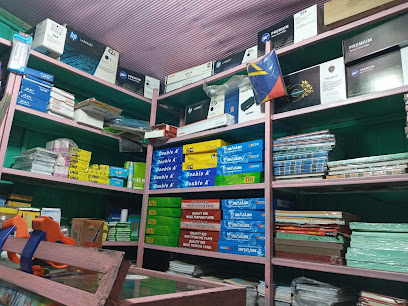
Shafite gebeya market
Discover the essence of local culture at Shafite Gebeya Market, where vibrant stalls showcase authentic crafts, foods, and a lively community spirit.

የማሌ ክርስቲያን ነጋዴዎች አ.ማ
Explore the vibrant local culture and shop for authentic Ethiopian treasures at የማሌ ክርስቲያን ነጋዴዎች አ.ማ in Koybe.

Essential bars & hidden hideouts
Beer Garden Inn
Experience the vibrant atmosphere and delicious German-Ethiopian cuisine at Beer Garden Inn, a top spot in Addis Ababa's Bole neighborhood.

Union Cocktail Bar & Restaurant
Discover the vibrant flavors of Addis Ababa at Union Cocktail Bar & Restaurant, where grilled delights and refreshing cocktails await.

Black Rose Lounge
Discover Addis Ababa's nightlife at Black Rose Lounge, where great music and exquisite drinks create an unforgettable experience.

Noble House Cocktails | Kazanchis | ኖብል ሃውስ ኮክቴል | ካሳንቺስ
Experience the perfect blend of Ethiopian charm and American cocktail culture at Noble House Cocktails in Addis Ababa.

The Roof Lounge | Bole | ዘ ሩፍ ላዉንጅ | ቦሌ
Discover the breathtaking views and vibrant atmosphere at The Roof Lounge in Bole, a must-visit spot in Addis Ababa for relaxation and socializing.

Las Vegas Hotel
Discover the lively ambiance of Las Vegas Hotel, a must-visit bar in Turmi, perfect for unwinding and experiencing local culture.
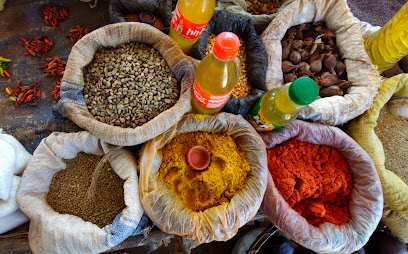
Viking Bar
Experience the vibrant nightlife of Addis Ababa at Viking Bar, where great drinks and friendly faces await.

Jinka 3 lounge
Relax and unwind at Jinka 3 Lounge, where local flavors and scenic views come together in the heart of Jinka, Ethiopia.

Asnaku restaurant
Discover the authentic flavors of Ethiopia at Asnaku Restaurant in Jinka, a culinary haven for food lovers and cultural enthusiasts.

Winner Cafe & Restaurant
Discover the flavors of Ethiopia at Winner Cafe & Restaurant, a vibrant dining spot in Jinka Town offering traditional dishes and a welcoming atmosphere.

Vikings Bar
Experience the vibrant nightlife at Vikings Bar in Addis Ababa, where Ethiopian hospitality meets a lively atmosphere and refreshing drinks.
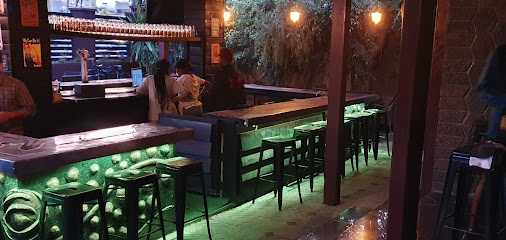
Harambe hotel
Discover the vibrant atmosphere of Harambe Hotel in Jinka, a perfect blend of comfort, culture, and delightful beverages.

Selam Barina Restorant
Experience the vibrant atmosphere of Selam Barina Restorant in Beto, where local charm meets a lively bar scene.

Meski Bar
Discover the vibrant Meski Bar in Arghi, where local flavors meet lively atmosphere for an unforgettable night out.
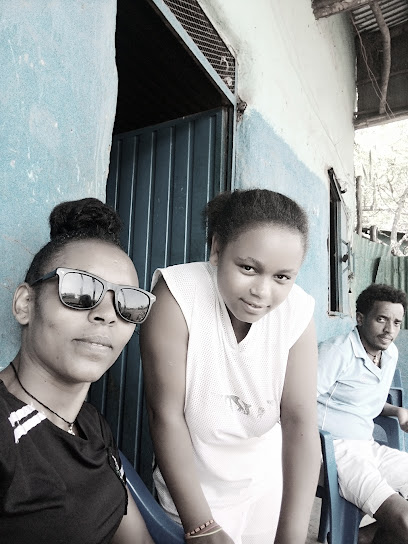
Konso katana
Discover the vibrant atmosphere of Konso Katana in Jinka, where culture, drinks, and camaraderie create unforgettable moments.

Local Phrases about Mago National Park
-
- HelloSelam
[Seh-lahm] - GoodbyeBaga
[Bah-gah] - YesEe
[Ee] - NoAy
[Aye] - Please/You're welcomeYaa
[Yah] - Thank youAmesegnalehu
[Ah-meh-seh-gnah-leh-hoo] - Excuse me/SorryNagaro
[Nah-gah-roh] - How are you?Endet neh?
[Ehn-deht neh] - Fine. And you?Dehna neh. Aye?
[Deh-nah neh. Aye] - Do you speak English?Inglizegna new?
[Ing-lee-zehg-nah new] - I don't understandAye befitih
[Aye beh-fee-tee]
- HelloSelam
-
- I'd like to see the menu, pleaseMenyu yemayawkal
[Men-yoo yeh-mah-yahw-kahl] - I don't eat meatNan yemisir man acchilal
[Nahn yeh-mee-seer mahn ah-ch-chi-lahl] - Cheers!Chin chereka
[Cheen cheh-reh-kah] - I would like to pay, pleaseBirr negarachihu
[Beer neh-gah-rah-chee-hoo]
- I'd like to see the menu, pleaseMenyu yemayawkal
-
- Help!Amsalech
[Ahm-sah-lech] - Go away!Hod tegegn
[Hohd teh-geg-n] - Call the Police!Ferid yemehal serategna
[Feh-reed yeh-meh-hahl seh-rah-tehg-nah] - Call a doctor!Ferid yemehal hiluf
[Feh-reed yeh-meh-hahl hee-loof] - I'm lostAye metet
[Aye meh-teht] - I'm illAye metet yefered
[Aye meh-teht yeh-feh-rehd]
- Help!Amsalech
-
- I'd like to buy...Ina yetena
[Ee-nah yeh-teh-nah] - I'm just lookingMeten new
[Meh-ten new] - How much is it?Endet new?
[Ehn-deht new] - That's too expensiveAye metet new
[Aye meh-teht new] - Can you lower the price?Tena yelem
[Teh-nah yeh-lem]
- I'd like to buy...Ina yetena
-
- What time is it?Selam new?
[Seh-lahm new] - It's one o'clockAnde zat
[Ahn-deh zaht] - Half past (10)Hamsa sadasat
[Hahm-sah sah-dah-saht] - MorningTsedal
[Tseh-dahl] - AfternoonAmdat
[Ahm-daht] - EveningMeskerem
[Mehs-keh-rehm] - YesterdayDehna hulet
[Deh-nah hoo-leht] - TodayDehna
[Deh-nah] - TomorrowDehna neger
[Deh-nah neh-gehr] - 1Ande
[Ahn-deh] - 2Hulet
[Hoo-leht] - 3Sost
[Sohst] - 4Arat
[Ah-raht] - 5Amist
[Ah-mist] - 6Sidist
[See-deest] - 7Sebat
[Seh-baht] - 8Semint
[Seh-mint] - 9Zetegn
[Zeh-teg-n] - 10Asir
[Ah-seer]
- What time is it?Selam new?
-
- Where's a/the...?Mihed yemihed?
[Mee-hed yeh-mee-hed] - What's the address?And mihed?
[Ahn-d mee-hed] - Can you show me (on the map)?Abatu fettetachihu?
[Ah-bah-too feht-teh-tah-chee-hoo] - When's the next (bus)?Ande yetemoker?
[Ahn-deh yeh-teh-moh-kehr] - A ticket (to ....)Tiketi (....)
[Tee-keh-tee]
- Where's a/the...?Mihed yemihed?
History of Mago National Park
-
Mago National Park, located in Ethiopia's Southern Nations, Nationalities, and Peoples' Region, is a sprawling wilderness area established in 1979. Covering an area of 2,162 square kilometers, the park is renowned for its diverse ecosystems, ranging from grasslands to riverine forests, and its rich biodiversity. It stands as a testament to Ethiopia's commitment to preserving its natural heritage.
-
Mago National Park is home to several indigenous communities, including the Mursi, Bodi, and Karo tribes. These communities have lived in the region for centuries, maintaining their unique cultural practices, languages, and traditional ways of life. The Mursi, known for their distinctive lip plates, have become particularly iconic. The cultural heritage of these tribes is an integral part of the park's identity, offering visitors a unique glimpse into Ethiopia's diverse ethnic tapestry.
-
The Omo Valley, where Mago National Park is located, is a site of significant archaeological importance. Excavations in the area have uncovered fossils and artifacts that provide valuable insights into early human history. One of the most notable discoveries is the Omo remains, which include some of the oldest known fossils of Homo sapiens, dating back approximately 195,000 years. These findings have cemented the region's status as a crucial location for understanding human evolution.
-
Mago National Park boasts a rich array of flora and fauna, making it a haven for wildlife enthusiasts. The park is home to several species of large mammals, including African elephants, lions, and buffaloes. Birdwatchers can revel in the sight of numerous avian species, such as the African fish eagle and the vibrant carmine bee-eater. The diverse plant life, ranging from acacia woodlands to lush riverine forests, supports this vibrant ecosystem.
-
Over the years, Mago National Park has been the focus of various conservation initiatives aimed at preserving its unique biodiversity and cultural heritage. Efforts have been made to mitigate human-wildlife conflicts, protect endangered species, and promote sustainable tourism. Collaborations between local communities, government bodies, and international organizations have played a crucial role in these conservation endeavors.
-
Mago National Park has embraced ecotourism as a means to promote sustainable development while preserving its natural and cultural resources. By offering guided tours, cultural experiences, and wildlife safaris, the park provides visitors with an immersive experience that fosters a deeper appreciation for the region's heritage. Revenue generated from tourism supports local communities and conservation projects, creating a mutually beneficial relationship between tourism and preservation.
Mago National Park Essentials
-
Mago National Park is located in the Southern Nations, Nationalities, and Peoples' Region (SNNPR) of Ethiopia. The nearest major city is Jinka, which has a small airport, Jinka Airport (BCO), serviced by domestic flights from Addis Ababa. From Jinka, you can hire a 4x4 vehicle or join an organized tour to reach the park, which is approximately 40 kilometers away. Alternatively, you can travel by road from Addis Ababa to Jinka, though this can take around 10-12 hours, depending on road conditions.
-
Within Mago National Park, transportation options are limited to private vehicles and organized tours. Given the rough terrain, it is advisable to hire a 4x4 vehicle with an experienced driver. Most tours include transportation, and this is often the most convenient option. Public transport does not operate within the park, and walking long distances is not recommended due to the park's size and wildlife.
-
The official currency in Ethiopia is the Ethiopian Birr (ETB). Credit cards are not widely accepted in the area, so it is essential to carry sufficient cash. ATMs are available in Jinka, but it is wise to withdraw enough funds in Addis Ababa before traveling to Mago National Park. Ensure you have small denominations, as change can be hard to come by in rural areas.
-
Mago National Park is generally safe for tourists, but it is important to take standard precautions. Avoid traveling alone, especially in remote areas, and always stay with your group or guide. Keep valuables secure and out of sight. There are no specific high-crime areas targeting tourists within the park, but it is always best to stay vigilant and aware of your surroundings.
-
In case of emergency, contact local authorities or your tour operator immediately. The emergency number in Ethiopia is 911, but response times in remote areas can be slow. It is advisable to have travel insurance that covers medical emergencies and evacuation. The nearest medical facility is in Jinka, so carrying a basic first aid kit is recommended. For serious health issues, you may need to be transported to a larger city.
-
Fashion: Do dress modestly, considering the local culture and climate. Lightweight, long-sleeved clothing is recommended to protect against the sun and insects. Avoid wearing flashy jewelry or expensive accessories. Religion: Do respect local customs and traditions. Many of the local tribes have specific cultural practices, so it is important to listen to your guide and adhere to their advice. Public Transport: Do not rely on public transport within the park; organized tours or private vehicles are necessary. Greetings: Do greet locals with a smile and a respectful nod. Learning a few phrases in Amharic or the local tribal languages can go a long way. Eating & Drinking: Do try local dishes if offered, but ensure that food is cooked thoroughly to avoid health issues. Carry bottled water, as tap water is not safe to drink.
-
To experience Mago National Park like a local, engage with the indigenous tribes such as the Mursi and Hamar. Respectfully observe their traditional way of life and customs. Take part in local markets in Jinka to buy handmade crafts and souvenirs. Hiring a local guide can provide deeper insights into the park’s wildlife and cultural heritage. Early mornings are the best times for wildlife viewing, so plan your excursions accordingly.
Trending Landmarks in Mago National Park
-
Simien Mountains National Park
-
Bale Mountains National Park
-
Awash National Park
-
Nech Sar National Park
-
Chebera-Churchura National Park
-
Eco Omo Lodge
-
Yangudi Rassa National Park
-
Gambella National Park
-
Babile Elephant Sanctuary
-
Round Omo Valley Tour
-
Key Afer Market
-
Open Ethiopia Tours
-
Kafta Sheraro National Park
-
Awash park
-
Omo Delta Tours
Nearby Cities to Mago National Park
-
Things To Do in Arba Minch
-
Things To Do in Awasa
-
Things To Do in Addis Ababa
-
Things To Do in Kitale
-
Things To Do in Lira
-
Things To Do in Debre Markos
-
Things To Do in Gulu
-
Things To Do in Mbale
-
Things To Do in Eldoret
-
Things To Do in Kisumu
-
Things To Do in Nakuru
-
Things To Do in Arua
-
Things To Do in Jinja
-
Things To Do in Bahir Dar
-
Things To Do in Naivasha









